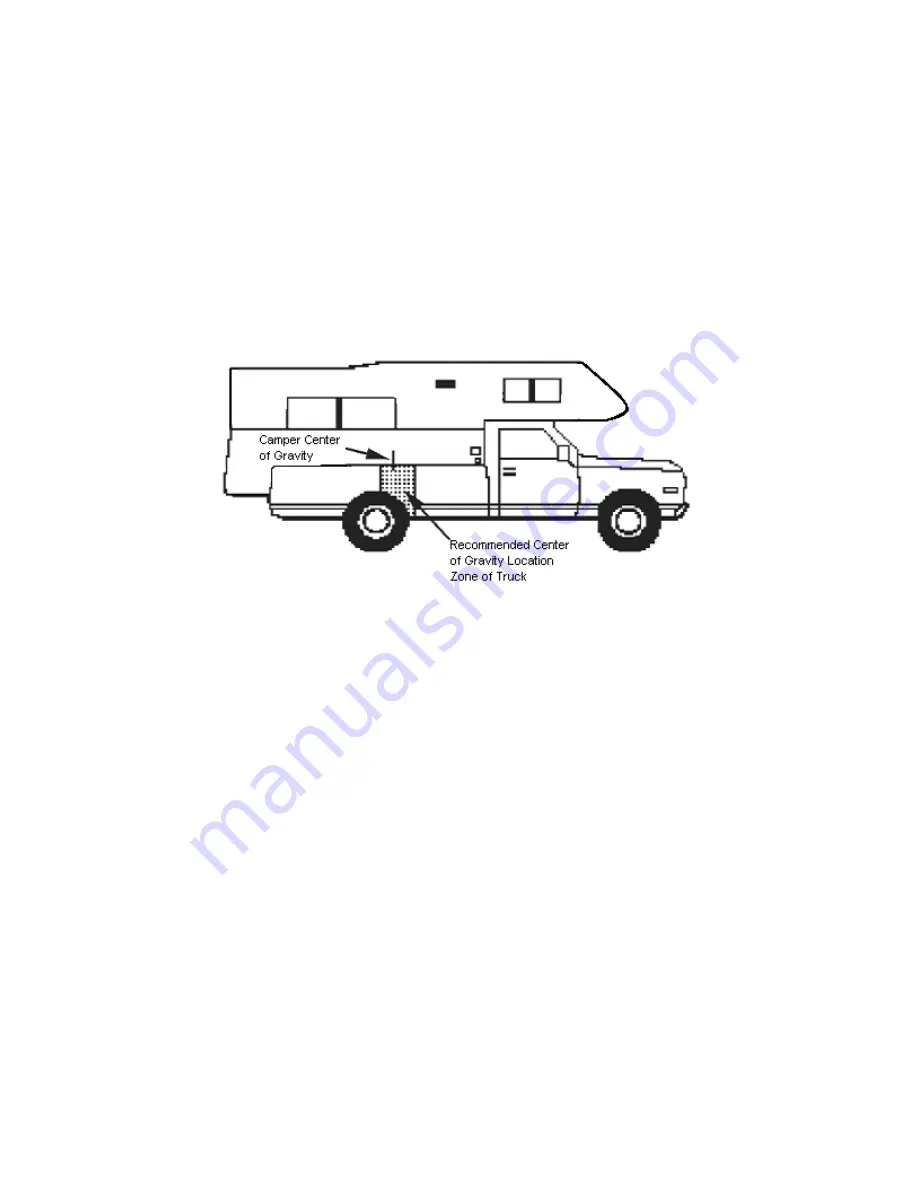
7
LOADING AND UNLOADING CAMPER
CENTER OF GRAVITY
When matching a camper to a truck, it is very important that the center of gravity of the camper fall within the
zone specified by the truck manufacturer. The figure below illustrates the location of the camper center of gravity
within the center of gravity zone of a typical truck. This center of gravity zone is generally from the center of the
rear axle to a point about 18" forward thereof. Each Travel Lite camper is labeled on both sides with the center
of gravity location on the camper. If the center of gravity of a truck camper is allowed to be behind the center of
the rear axle, in other words, out of the truck's center of gravity measurements, the truck may become light on
the front end causing steering and handling problems, thereby jeopardizing the safety of the occupants while in
transit.
BALANCING THE LOAD
When loading the camper store heavy gear first keeping it on or close to the camper floor. Place heavy things
far enough forward to keep the loaded camper’s center of gravity within the zone recommended by the truck
manufacturer. Store only light objects on high shelves. Distribute weight to obtain even side-to-side balance of
the loaded vehicle. Secure loose items to prevent weight shifts that could affect the balance of your vehicle.
When the truck camper is loaded, drive to a scale and weigh on the front and on the rear wheels separately to
determine axle loads, the weight rating (GAWR). The total of the axle loads should not exceed the gross vehicle
weight rating (GVWR). These weight ratings are given on the vehicle certification label that is located on the left
side of the vehicle, normally the dash panel, hinge pillar, door latch post, or door edge next to the driver on
trucks manufactured after January 1, 1972. If weight ratings are exceeded, move or remove items
TAKING THE CAMPER OFF THE TRUCK
Always unload the camper on a level spot. If the ground is soft, use planks or scraps of ¾” plywood under the
jacks to distribute the weight of the camper over a wider area. Once the storage spot is selected, lower the jacks
to the ground. Disconnect the tie-downs and wiring harness. Raise the camper off the truck bed. Drive the truck
clear of the camper. Put a set of (sufficiently strong) sawhorses or other type of support under the camper and
lower each jack in turn until the camper is resting on the supports. Although the jacks could be retracted, long-
term storage would be more secure with the jacks remaining on the ground giving additional support for
maximum stability.
WARNING:
The sole function of jacks, of any type, is to
temporarily
support a truck camper to get the camper
on or off a truck. The jacks alone should never be used for long-term storage or occupancy. For long-term
storage, the floor should be supported by substantial sawhorses, or blocking and beams. The jacks may remain
extended to the ground for additional stability.
LOADING THE CAMPER ON THE TRUCK
Before loading the camper on the truck, the tie downs should be attached to the truck. Position the truck in front
of the camper before raising the camper on the jacks. Remove any cover and tie-down ropes, and then raise the








































